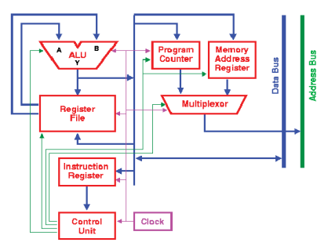Design and Verification of 16 bit RISC Processor Using Vedic Mathematics
Also Available Domains DSP Core|Xilinx Vivado
Project Code :TVPGTO597
Objective
The main aim of this paper is that the multiplier unit in Arithmetic and Logic Unit (ALU) and Multiplier and Accumulator (MAC) is implemented using Vedic Sutras reduce computation delay and improve the performance of the RISC design.
Block Diagram

Specifications
Software Requirements:
- Xilinx ISE 14.7 Tool
- HDL: Verilog
Hardware Requirements:
- Microsoft® Windows XP
- Intel® Pentium® 4 processor or Pentium 4 equivalent with SSE support
- 512 MB RAM
- 100 MB of available disk space
Learning Outcomes
- Basics of Digital Electronics
- VLSI design Flow
- Introduction to Verilog Coding
- Different modeling styles in Verilog
- Data Flow modeling
- Structural modeling
- Behavioral modeling
- Mixed level modeling
- Introduction to Arithmetic circuits
- Knowledge on MAC unit
- Different control units and instructions
- Knowledge on RISC processor
- Applications in real time
- Xilinx ISE 14.7 for design and simulation
- Generation of Netlist
- Solution providing for real time problems
- Project Development Skills:
- Problem Analysis Skills
- Problem Solving Skills
- Logical Skills
- Designing Skills
- Testing Skills
- Debugging Skills
- Presentation Skills
- Thesis Writing Skills
Demo Video
https://youtu.be/h6S7ypTKqq4?si=lySBwabFquWMsZYK
Related Topics


 Paper Publishing
Paper Publishing
